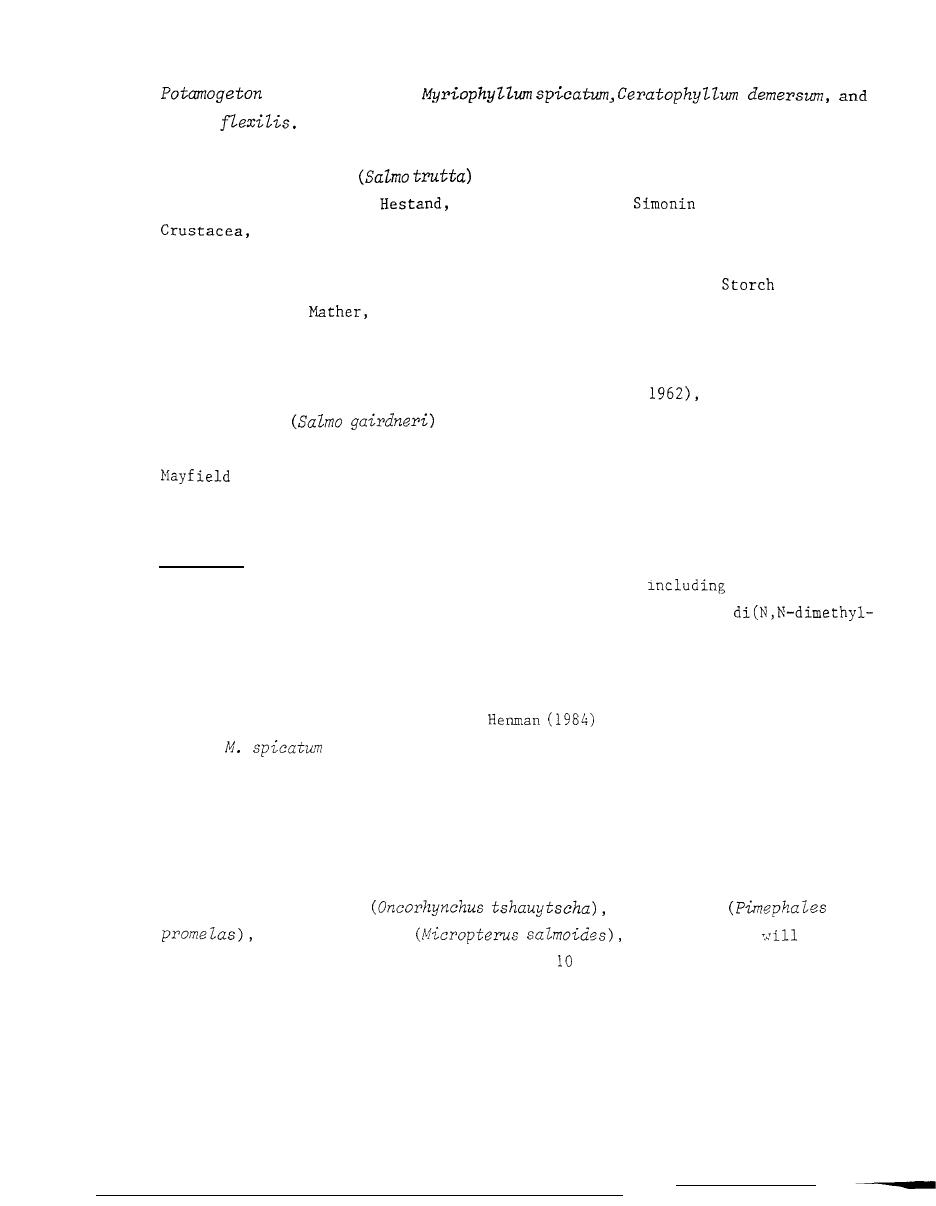
to 1.0 ppm for
Najas
As noted earlier, the combined use of diquat and copper is particularly
and also to some invertebrate animals of
toxic to brown trout
and Van Dyke 1973;
and Skea 1977).
the fish food web (May,
a group of animals of great significance to fish diets,
are
extremely sensitive to diquat at levels well below those needed for plant
treatment (Wilson and Bond 1969; Nicholson and Clerman 1974;
and Winter
1983; Williams,
and Carter 1984).
Other invertebrate animals appear
to survive doses well in excess of those that would be encountered during
reservoir treatment (Naqvi, Leung, and Naqvi 1980; Marshall 1984).
Bluegills
tolerate high levels of diquat (Surber and Pickering
but perch and
rainbow trout
exhibit sublethal effects that would interfere
with successful spawning (Bimber, Boening, and Sharma 1976; Dodson and
The latter study has shown that rainbow trout accumulate sig-
1979).
nificant amounts of diquat in their tissues, although the study did not
specify whether these were edible or nonedible tissues.
Endothall
Endothall is produced in several formulations,
the liquid
(Aquathol K) and granular (Aquathol) dipotassium salt and the
alkylamine) salt (Hydrothol 191) in liquid and granular forms.
Endothall acts
on plant tissues to produce abnormal permeability, loss of water, and wilting
Susceptible plants may be controlled for weeks to months.
(Keckemet 1969).
For example, Rodgers, Reinert, and
found that it took 2 months
began to reinvade after treatment,
before
Doses of endothall to
target macrophytes range from 1 to 3 ppm, depending on target species.
The
use of endothall has been reviewed by Armstrong (1974).
Both the mono and di(N,N-dimethylalkylamine) salts have been found to be
very toxic to some fish at concentrations below those needed for plant control
(Walker 1963, 1964; Finlayson 1980).
Armstrong (1974) reports that rainbow
trout, chinook salmon
mud minnows
largemouth bass
and bluegills
toler-
ate disodium endothall concentrations from
to 100 times the concentration
recommended for plant treatment.
The disodium and potassium salts apparently
166



 Previous Page
Previous Page
